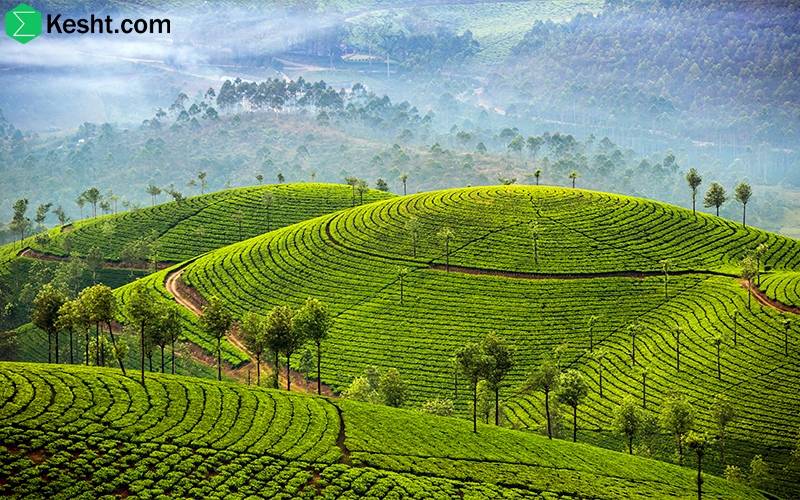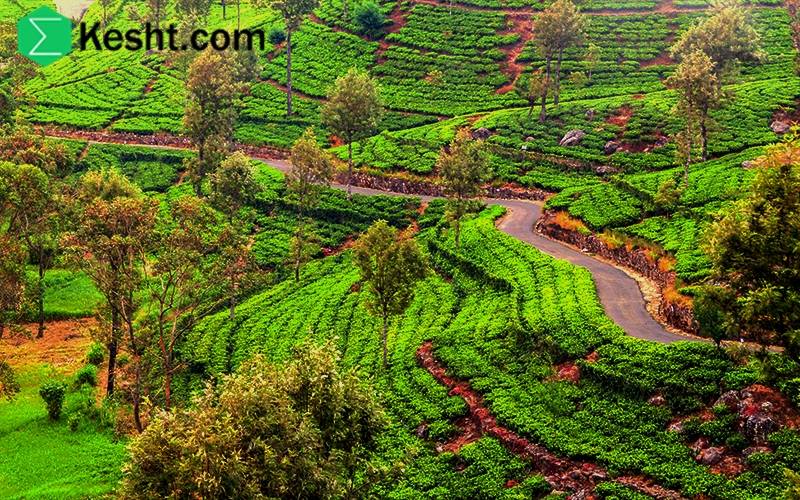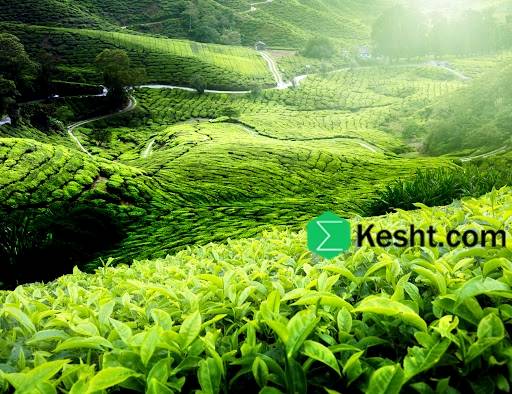### Tea Exports (Part Two)
#### What Aspects of Tea Quality Does Standard 2543 Address?
The Iranian national standard number 2543 addresses various aspects of tea quality and includes the following:
1. **Definition and Classification of Tea**
- Explanation of different types of tea (black tea, green tea, etc.) and the characteristics of each type.
2. **Sensory Specifications**
- Evaluation of sensory characteristics of tea, including color, aroma, flavor, and the appearance of leaves.
3. **Microbiology**
- Determination of maximum allowable microorganisms, including bacteria and molds, to ensure product safety and hygiene.
4. **Chemical Composition**
- Examination of the chemical compounds in tea, including caffeine, tannins, and other active substances.
5. **Testing Methods**
- Provision of standard methods for testing and evaluating tea quality, including sampling and analysis methods.
6. **Packaging and Storage**
- Recommendations for suitable packaging and storage conditions to maintain tea quality.
Standard 2543 comprehensively addresses various aspects of tea quality, aiming to ensure the production and supply of high-quality and safe tea for consumers.
#### What Is the Maximum Allowable Caffeine in Tea According to This Standard?
The Iranian national standard number 2543 for tea does not specify a precise maximum allowable caffeine content. However, in general, the caffeine content in different types of tea is typically as follows:
1. **Black Tea**
- Usually between 40 to 70 milligrams of caffeine per cup (approximately 240 milliliters).
2. **Green Tea**
- Typically between 20 to 45 milligrams of caffeine per cup.
3. **White Tea**
- Usually less than 30 milligrams of caffeine per cup.
4. **Herbal Tea (Caffeine-Free)**
- Generally contains no caffeine and is recognized as a caffeine-free option.
According to international standards, the caffeine limits in tea align with the above amounts.
### Benefits of Tea Exports from Iran to Countries with No Tea Cultivation Capability
Exporting tea from Iran to countries that lack the ability to cultivate tea has several benefits, including:
1. **Economic Income**
- **Increased Revenue**: Tea exports can be a significant source of revenue for the country.
- **Job Creation**: Developing the tea industry and its exports can lead to the creation of new jobs in agriculture, packaging, and distribution.
2. **Product Diversity**
- **Market Diversification**: Exporting tea to other countries can enhance the diversity of the country’s export portfolio and reduce dependency on other products.
3. **Strengthening International Relations**
- **Expanding Trade Relations**: Tea exports can help strengthen trade and diplomatic relations with various countries.
- **Cultural Exchange**: Introducing Iranian tea into foreign markets provides an opportunity to showcase Iran’s culture and traditions.
4. **Optimal Use of Natural Resources**
- **Efficient Use of Agricultural Land**: Tea exports can promote optimal utilization of suitable agricultural land in Iran.
5. **Brand Creation and Global Reputation**
- **Strengthening National Brand**: Successful tea exports can help establish and strengthen the Iranian tea brand in global markets.
6. **Development of Domestic Market**
- **Industry Growth**: With increased exports, related industries such as packaging and distribution will also grow.
Exporting tea from Iran to countries that cannot cultivate tea can serve as an effective strategy for economic growth and sustainable development in the country.
### Neighboring Countries of Iran That Cannot Cultivate Tea and Have Import Needs
Several neighboring countries of Iran lack the capacity to cultivate tea and are inclined to import it. These countries include:
1. **Iraq**
- Due to climatic conditions, tea cultivation in Iraq is limited, and the country requires tea imports.
2. **Afghanistan**
- Afghanistan does not widely cultivate tea due to its mountainous terrain and climatic conditions, making it dependent on tea imports.
3. **Turkmenistan**
- Turkmenistan also relies on tea imports due to unsuitable climatic conditions for tea cultivation.
4. **Kuwait**
- Kuwait has desert land and water scarcity, making it unable to cultivate tea and reliant on imports.
5. **United Arab Emirates**
- This country does not cultivate tea due to its climatic and geographical conditions and needs to import tea from other countries.
These countries, due to their specific geographical and climatic conditions, depend on tea imports from producing countries like Iran, making them suitable markets for Iranian tea exports.
### What Is the Tea Import Volume for These Countries?
The tea import volumes in Iran’s neighboring countries can vary and change based on the year and economic conditions. Generally, the following estimates can be made:
1. **Iraq**
- **Annual Imports**: Iraq is one of the largest tea importers in the region, with imports estimated at around 30,000 to 40,000 tons per year.
2. **Afghanistan**
- **Annual Imports**: Afghanistan imports about 20,000 to 30,000 tons of tea per year.
3. **Turkmenistan**
- **Annual Imports**: Turkmenistan typically imports between 5,000 to 10,000 tons of tea.
4. **Kuwait**
- **Annual Imports**: The tea import volume in Kuwait is estimated to be around 10,000 to 15,000 tons per year.
5. **United Arab Emirates**
- **Annual Imports**: The UAE, as a commercial hub, has tea imports exceeding 20,000 tons per year.
These figures are approximate, and for more precise information, it is advisable to review the customs and trade statistics of each country.
### Major Tea Exporters to Neighboring Countries of Iran
The main tea exporters to Iran’s neighboring countries include:
1. **China**
- **Status**: China is one of the largest producers and exporters of tea in the world, exporting tea to various countries, including Iraq and Afghanistan.
2. **India**
- **Status**: India, also a major tea producer, has significant exports to Middle Eastern countries, including Kuwait and the UAE.
3. **Sri Lanka**
- **Status**: Sri Lanka is renowned for its black tea production and has substantial exports to regional countries, especially to Iraq and the UAE.
4. **Thailand**
- **Status**: Thailand exports its special and high-quality teas to neighboring countries and other markets.
5. **Indonesia**
- **Status**: Indonesia, as a tea producer, exports tea to Middle Eastern countries.
These countries are recognized as major exporters to Iran’s neighbors due to the high quality and diversity of their tea products.
### Types of Tea Exported from Each Country
The different types of tea exported from major exporting countries to Iran’s neighbors are as follows:
1. **China**
- **Type of Tea**: Green tea and black tea (especially Dragon Well and Yuan tea).
- **Status**: China is famous for the diversity and high quality of its green and black teas.
2. **India**
- **Type of Tea**: Black tea (especially Darjeeling and Assam).
- **Status**: India is known for its uniquely flavored black teas, which are primarily exported to Middle Eastern countries.
3. **Sri Lanka**
- **Type of Tea**: Black tea (Ceylon tea).
- **Status**: Sri Lanka is globally renowned for its Ceylon tea, mainly exported to Arab countries and the UAE.
4. **Thailand**
- **Type of Tea**: Green tea and flavored tea.
- **Status**: Thailand mainly exports green teas with unique flavors and aromatic teas.
5. **Indonesia**
- **Type of Tea**: Black tea and green tea.
- **Status**: Indonesia exports both black and green teas, but its black tea is more popular in the markets.
Each country exports specific types of tea based on climatic conditions and cultivation traditions, contributing to diversity in global markets.
### Current Status of Tea Exports from Iran
The overall status of tea exports from Iran is as follows:
1. **Export Volume**
- **General Status**: Iran, as one of the tea producers in the region, exports approximately 100,000 to 150,000 tons of tea annually.
2. **Export Destinations**
- **Neighboring Countries**: Major export destinations for Iranian tea include neighboring countries such as Iraq, Afghanistan, and Turkmenistan.
- **Other Markets**: Iranian tea is also exported to various European and Asian countries.
3. **Type of Exported Tea**
- **Black Tea**: The majority of Iran’s tea exports are in the form of black tea.
- **Green and Herbal Tea**: Exports of green tea and various herbal teas are also growing.
4. **Challenges**
- **Competition**: Competing with large producers like China and India poses challenges for Iranian tea exports.
- **Quality and Packaging**: There is a need to improve the quality and packaging of products to attract more international markets.
5. **Opportunities**
- **New Markets**: Given the increasing demand for natural and organic products, Iranian tea exports could access new markets.
- **Brand Development**: Promoting the Iranian tea brand and introducing it as a quality product can create new opportunities.
Despite the challenges, tea exports from Iran have significant potential for growth and development and can serve as an important source of income for the country.




